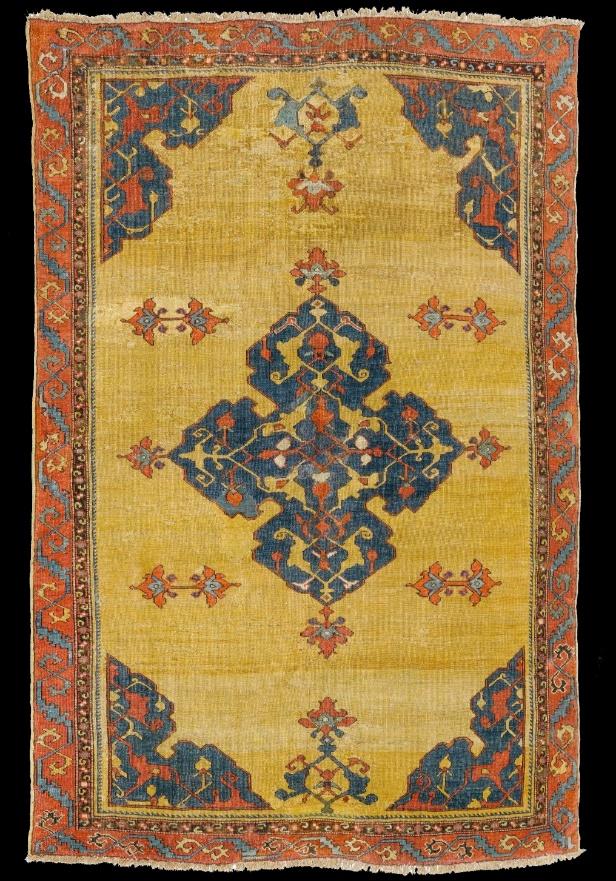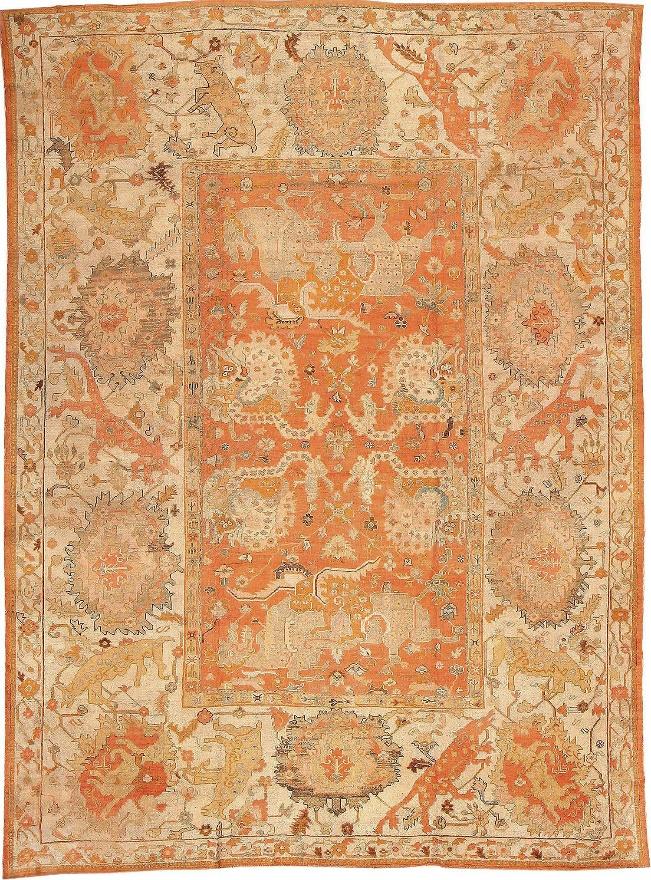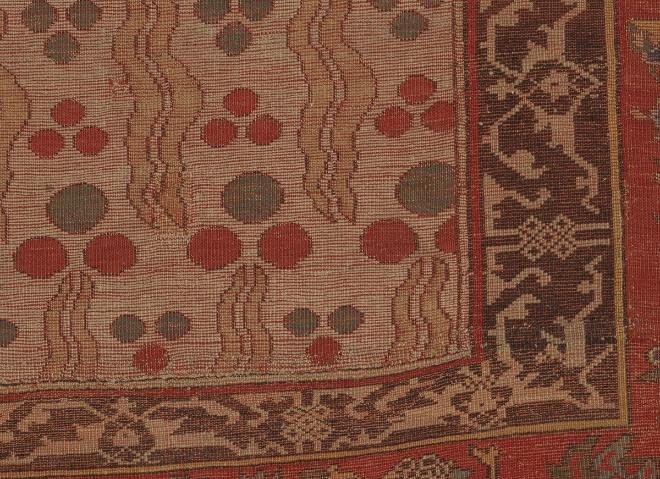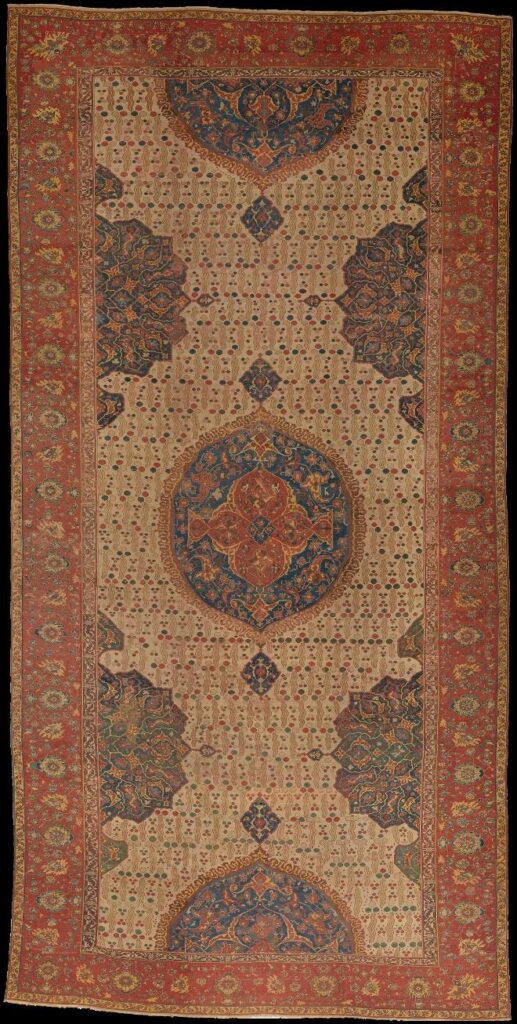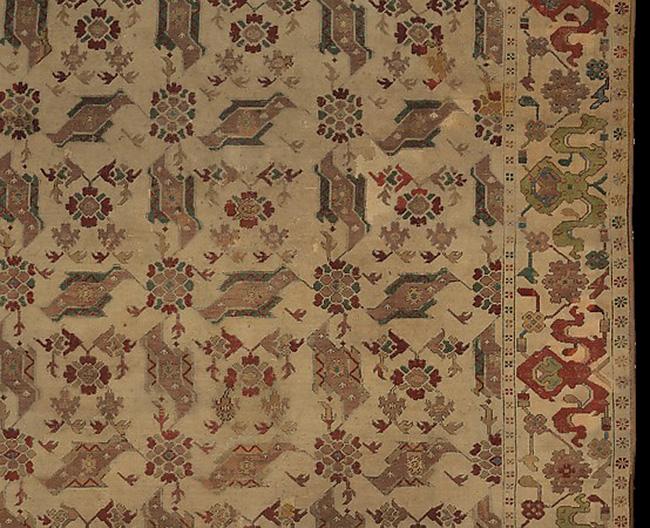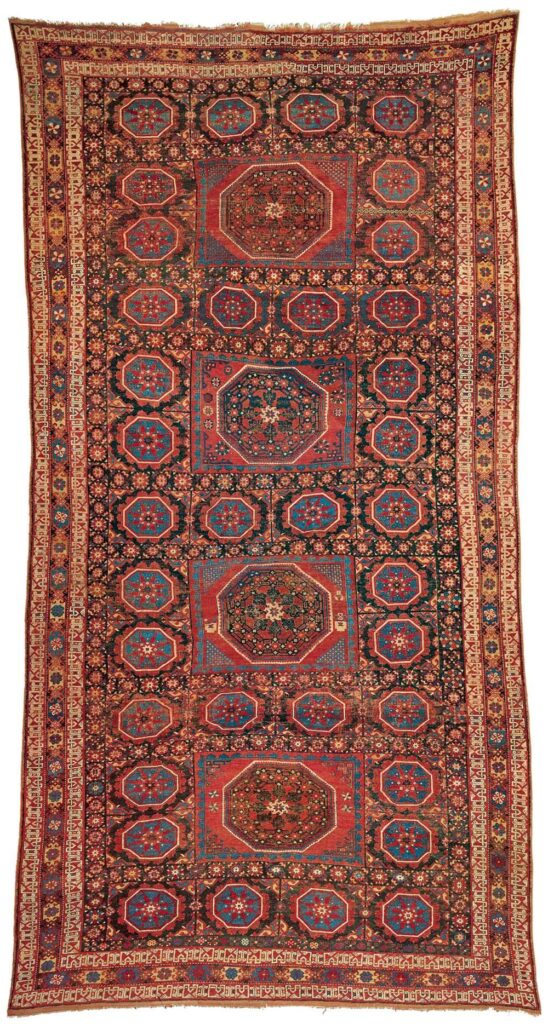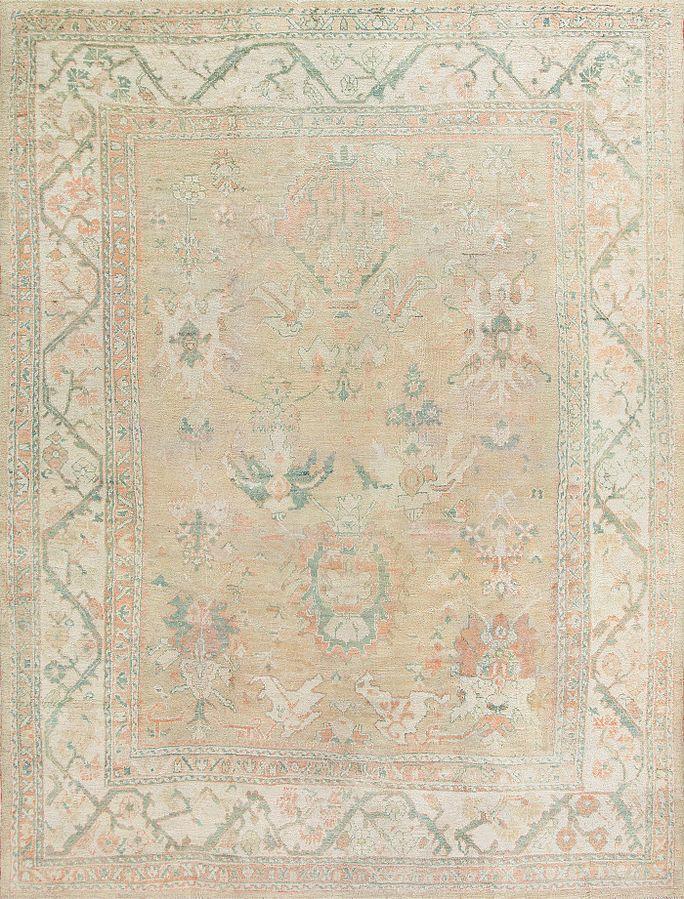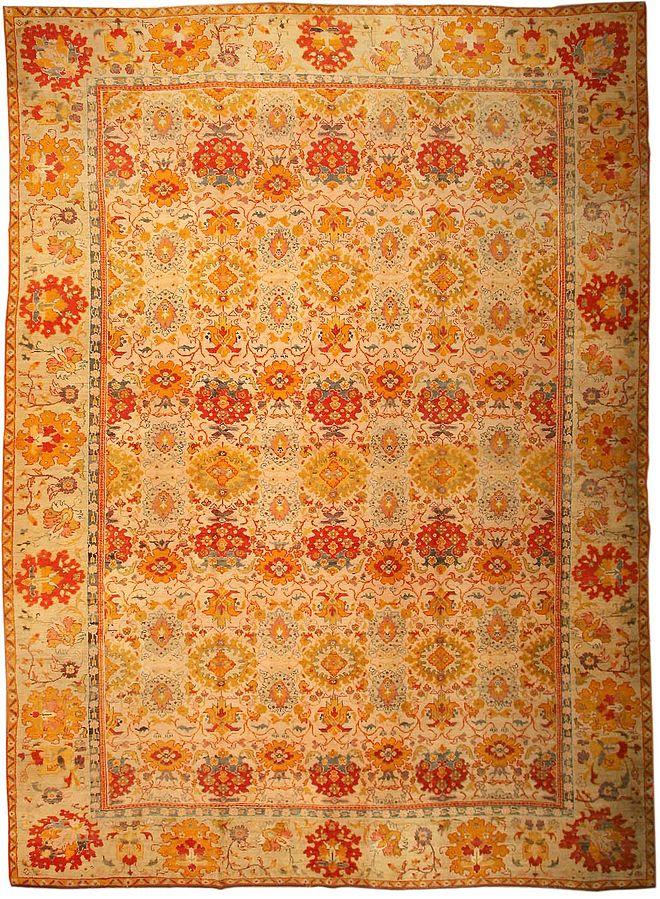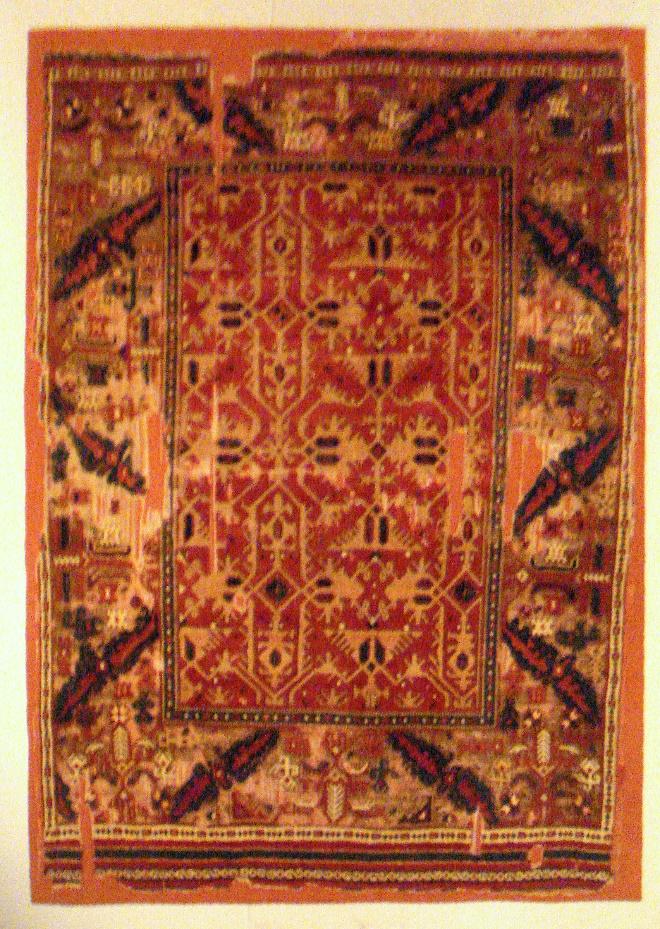Ushak Rugs (as rich as Croesus)

Ushak (Oushak, Uşak) is a town of west central Anatolia. Probably meaning “the Lovers”, it is a city in the interior part of the Aegean Region of Turkey. The city has a population of 500,000 and is the capital of Uşak Province. The city was previously known by its Greek name of Ousakeion.
The Iron Age kingdom Lydia located generally east of ancient Ionia in the modern western Turkish provinces of Uşak, Manisa and inland İzmir. Even today, Croesus, the most well-known Lydian king, is considered the symbol of wealth and fortune. Known in Turkish, Persian and Arabic as Karun (Qarun), Croesus and his legendary treasure are present motifs in Middle Eastern folklore.
Indeed, Karun Treasure is the name given to an actual treasure. It is a collection of 363 valuable Lydian artifacts dating from the 7th century BC and originating from Ushak Province.
Rugs and carpets have been woven in Ushak since at least the fifteenth century. The city had used to be an important weaving center with royal workshops. Ushak rugs were widely used on the floors of ottoman mosques and palaces.
With the royal workshops in it, many great carpets of the Empire are attributed to Ushak and the surrounding area. Istanbul’s mosques, for instance, used to be carpeted with Ushak weavings.
Pieces made in Ushak may be branded as Oushaks.

Technical aspects and the structure of Ushak Rugs

Ushak rugs are known for their silky, luminous wool. Silk may be used in the pieces made in Ottoman royal workshops.
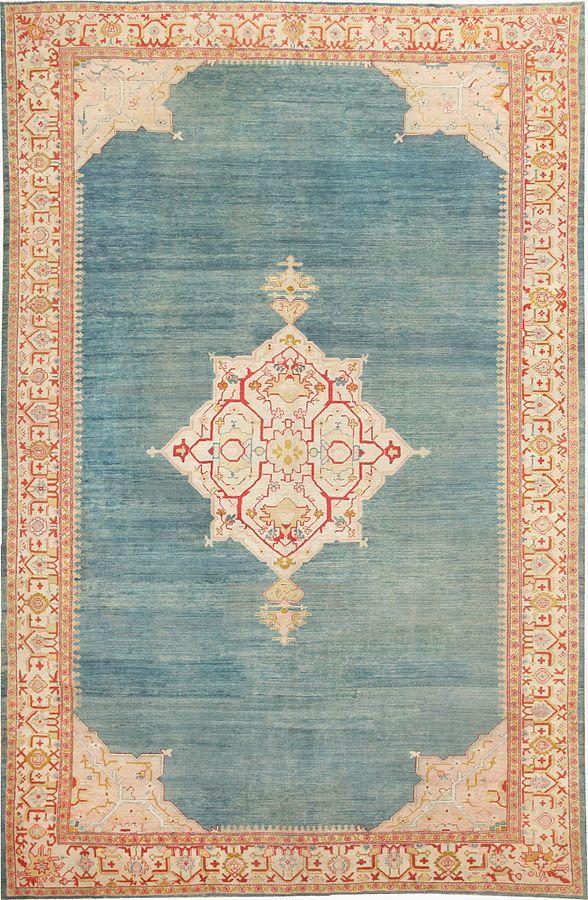
Normally, royal workshops apply various weave techniques. For example ottoman pieces imitating Persian rectilinear designs should be woven with asymmetric knots while the main Anatolian structure is symmetric knotting.
Knot density varies for different types. Pieces made for mosques and palaces are normally woven in carpet sizes. Rug sizes with prayer designs are also common.
Dyeing and painting of Ushak Rugs
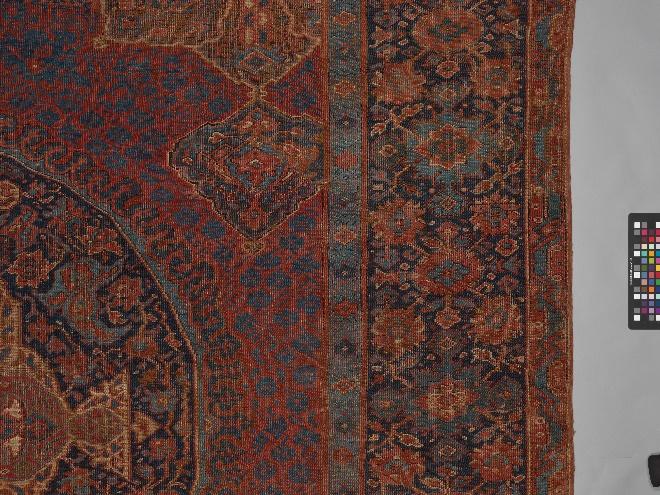
Generally, Ushak painters preferred neutral coloring. But the fact is not always true. There are also pieces with most exposing colors and intense contrasts.
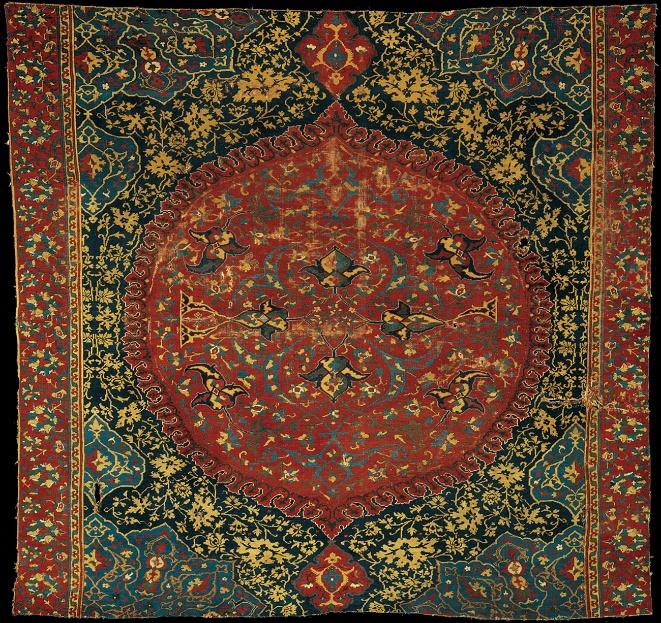
The dyes tend towards: cinnamons, terracotta tints, gold, blues, olive greens, ivory, saffron, salmon pink and shades of gray.
Light tones are much favored and suitable for luminous silky wool Ushak is famous for.
Designs and patterns of the Ushak Rugs

With the royal workshops in it, many imperial designs named after Ushak. These include the Medallion Ushak, Star Ushak, the Bird Ushak, Crab Ushak, Chintamani Ushak, and Holbein and Lotto carpets.
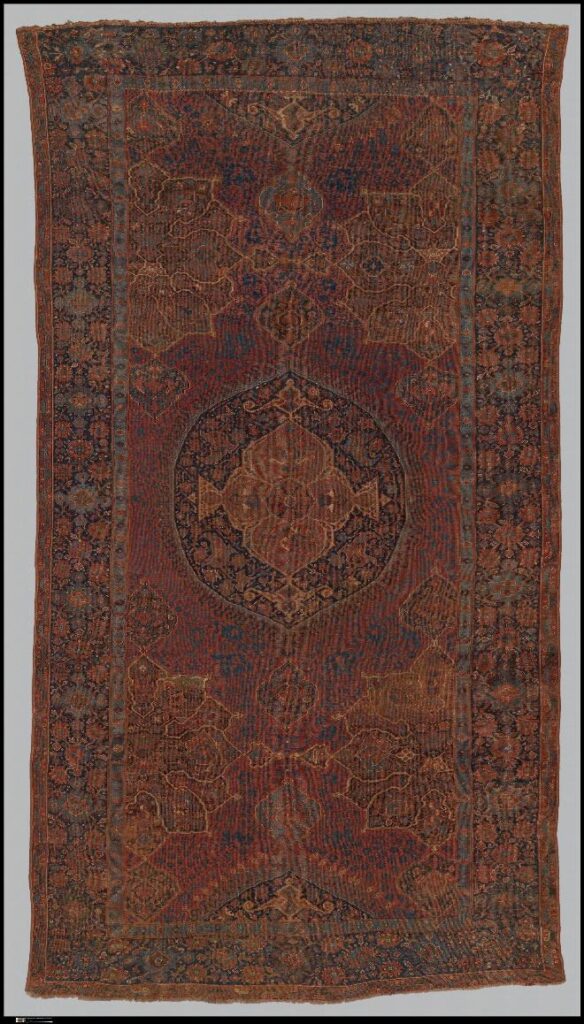
The earliest Turkish prayer rugs, too, are attributed to the 16th century Ushak. Prayer (niche- arch) type of design is the most beloved design amongst Anatolian weavers. Seventeenth-century Ushak prayer rugs have opposing niches at the ends of the rug.
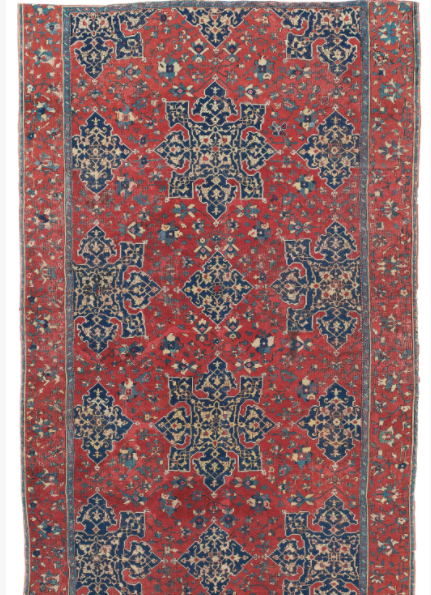
Repeating columns of a serrated Botteh resembling crab, used in antique Ushaks. These are known generally as Crab Ushaks.
In the Ottoman Court, the glory of Sultans, princes and dignitaries were symbolized by Chintamani motifs, appearing on their garments as well as on royal carpets. A good number of ottoman woven pieces remained from the 16th century onward with Chintamani as their main motif, probably woven in Ottoman royal workshops of Ushak.
Persian royal designs were also copied in Ushak workshops. These were sixteenth century royal carpets of Isfahan, Kashan and Joshaqan where Safavid royal workshops produced silken carpets for Persian, Indian and ottoman Palaces.

Stellar medallions were common in Ushak. The famous star Ushak is a pattern of large, eight-lobed, blue stars filled with yellow arabesques alternating with indented diamonds on a red field. Star Ushak rugs were woven in 16th and 17th centuries.

